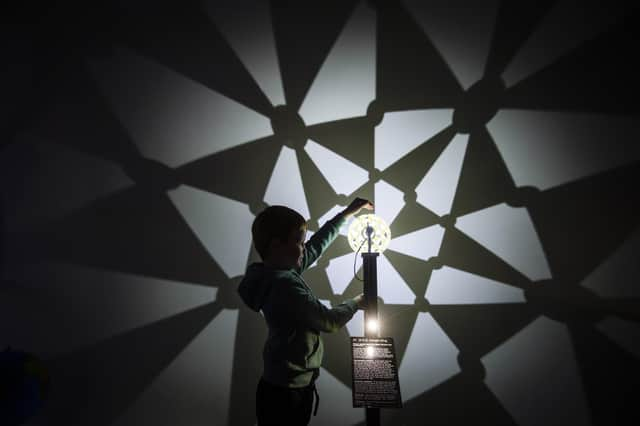Maths Week Scotland 2022: We can be a maths-positive nation if we realise the inherent beauty of numbers – Katie Oldfield


Whether it’s artists using the golden ratio to calculate proportions or musicians working out the number of beats per bar, creativity is inherently mathematical.
In the same way, it can seem surprising to hear mathematicians describing their work as “beautiful”, as we consider the subject as a functional and logical way solve problems.
Advertisement
Hide AdAdvertisement
Hide AdBut, for those who love the subject, there is real enjoyment and creativity in the journey to the solution. There is not always one route as mathematicians explore different ways to find a solution, much like mixing paints to make the exact colour needed for a piece of art or playing a selection of harmonious chords to create beautiful piece of music.
Maths is unequivocally a creative subject.
In its simplest form, we can split maths into two disciplines: applied mathematics and pure mathematics. Applied maths finds solutions for known problems in other disciplines including engineering, finance and computing. Mathematicians often have to be creative when finding solutions to different problems by exploring various methods.
Pure mathematics takes on a more abstract approach to the subject. Mathematicians use creativity and imagination to explore different areas of mathematics, sometimes not knowing where their research will lead them.
Practical applications as a result of their research may not be discovered until years later. For example, Radon transforms, which were first discovered in 1917, were used over 60 years later as essential formulas for developing X-rays to see cancers. The X-ray technology using the Radon transforms formula won a Nobel Prize in 1979.
This week sees the return of Maths Week Scotland for our largest event to date. We want to show schools, families and community groups across the country how we can appreciate the beauty of maths and demonstrate the part it plays in so many areas that bring beauty to our lives.
More than 67,000 pupils and many more thousands of families are exploring maths through the creative lens. Sixty-three schools, learning institutions, community groups, museums and science centres have received grants to develop maths-based projects, themed around the beauty of maths with the intention to inspire, enthuse and educate young people in a creative way.
This year we have been thrilled to work with National Galleries of Scotland to explore maths in their art collection, giving an insight into how maths can be found in unexpected places.
Family-friendly activities taking place during the week range from bringing together triangles of repeating patterns to form a piece of art known as a Sierpinski triangle to an interactive display of illuminated geometric shapes and optical illusions.
Advertisement
Hide AdAdvertisement
Hide AdWe aim to transform Scotland into a maths-positive nation. By igniting the curiosity of maths through our programmes, we hope everyone can appreciate that sums and numbers form a truly beautiful subject.
Katie Oldfield is co-ordinator of Maths Week Scotland, which is part of the Scottish Government’s drive to encourage positive attitudes to numeracy and maths and is developed and delivered by National Museums Scotland
Comments
Want to join the conversation? Please or to comment on this article.
